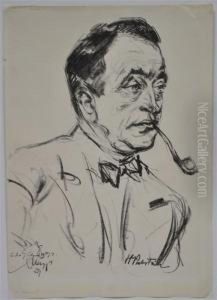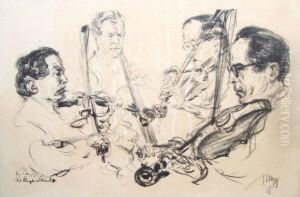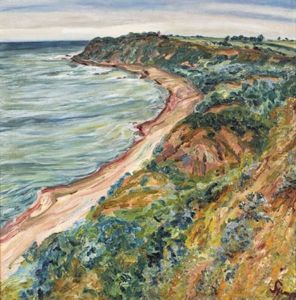Emil Stumpp Paintings
Emil Stumpp was a German teacher, painter, and graphic artist, renowned for his portraits and characterized by his unique technique in lithography. Born on March 18, 1886, in Neckarzimmern, Germany, Stumpp grew up in a time of artistic innovation and societal changes that would influence his later work.
Stumpp studied at the Kunstgewerbeschule (School of Arts and Crafts) in Stuttgart and later at the Academy of Fine Arts in Leipzig. He initially worked as a teacher, but his passion for art, particularly drawing and lithography, soon became his primary focus. Stumpp was particularly known for his portrait lithographs, which were distinctive due to his use of a special crayon technique that lent a soft and expressive quality to his work.
Through his lithographs, Stumpp captured the likeness of many notable figures of his time, including politicians, artists, writers, and intellectuals. His subjects ranged from Albert Einstein to Thomas Mann, capturing their essence with a psychological depth that was uncommon for the era. He was also a prolific contributor to newspapers and periodicals, where his portraits would often accompany articles or editorials.
Stumpp's career, however, was not without controversy. His critical portrayal of Adolf Hitler in 1933 led to his arrest and a temporary ban on his artwork. This incident reflected the tense relationship between art and politics in Germany during the rise of the Nazi regime. Despite these challenges, Stumpp continued to work and produced a vast body of portraits that remain a significant contribution to the art of lithography.
Tragically, Emil Stumpp's life was cut short when he died on April 5, 1941, in Stuhm (now Sztum, Poland) while in police custody. His death was a result of a stroke, which was likely brought on by the harsh conditions he endured under the Nazi regime. Stumpp's legacy lives on through his extensive body of work, which provides not only a gallery of the faces of his time but also a testament to the spirit of artistic expression in the face of oppression.


